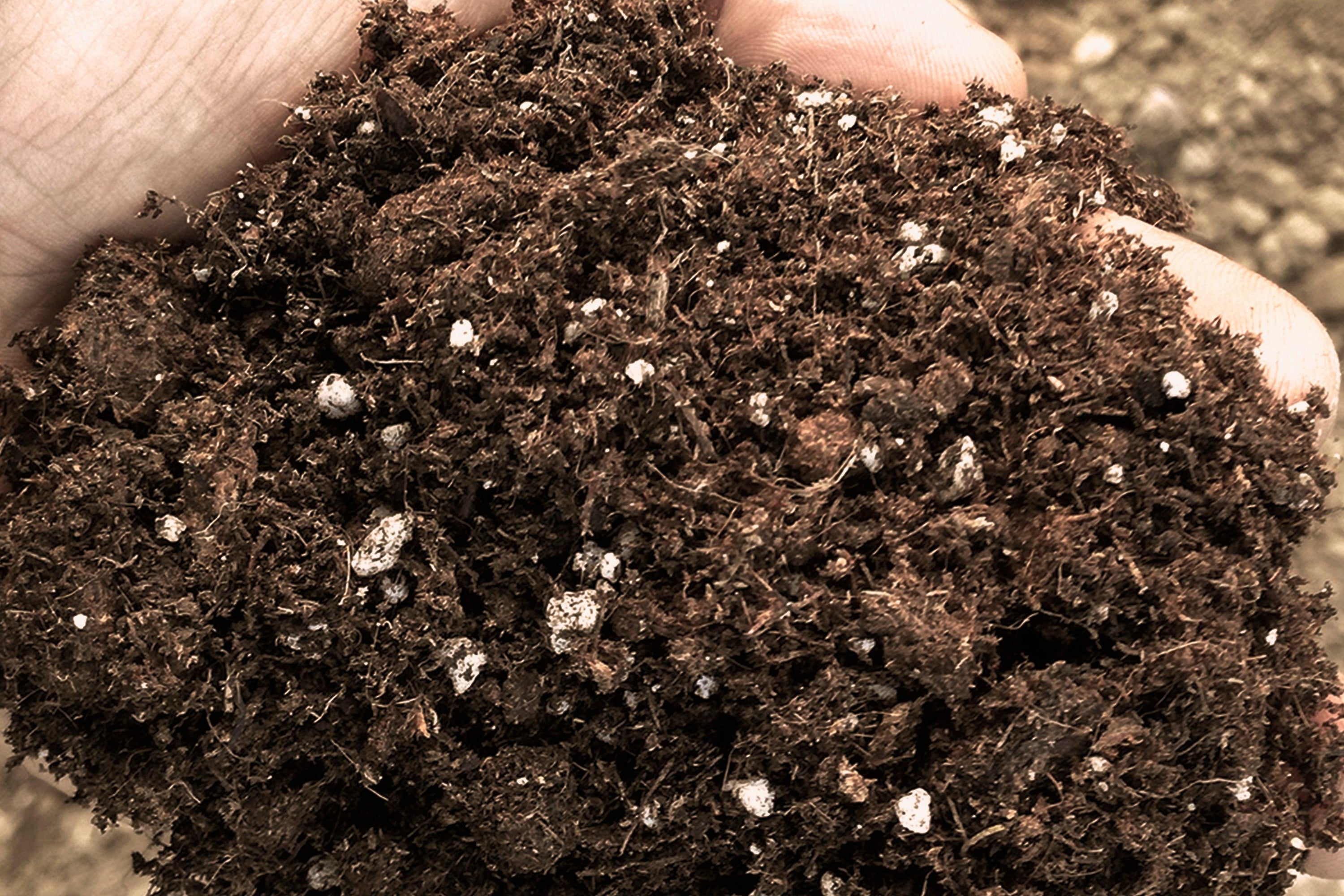The quality of the soil is the most important factor to keep under control in the cultivation of cannabis: the growing medium will be the habitat of your roots, which must have enough space to develop and enough air to breathe and allow the plant to grow.
There are many ways to provide plants with optimal soil in which to grow and develop, but to do so you need to keep a few things under control.
 How do I choose soil?
How do I choose soil?
Three factors contribute to the ability of roots to penetrate the soil: its consistency, pH and the nutrients present .
- The consistency of the earth depends on the size and physical conformation of the mineral particles present. If the soil is too compact, root development and water and oxygen retention may be affected, due to poor drainage and worsening of the various processes of assimilation of nutrients.
Clay or clay soil is made up of tiny mineral particles which, when wet, clump together, slowing down or stopping root penetration and liquid drainage. Sandy soils have very large particles, which allow good aeration and proper drainage.
It is necessary to irrigate frequently, since these types of soil tend to retain little water. Silty soil, on the other hand, is ideal for growing cannabis: it is composed of a mix of clay, silt and sand and, thanks to the different sizes of these elements, it drains well while retaining nutrients and liquids.
- The best soil for growing cannabis has a pH between 6.5 and 7, perfect for allowing marijuana to adequately extract and assimilate nutrients. If the pH is too acidic, the acid salts bind to the fertilizers, preventing their absorption by the roots. On the contrary, a basic soil with a high pH makes nutrients unassimilable. The pH is particularly important for cultivation in soil, since the presence of certain bacteria useful for the growth of the cannabis plant depends on it.
- Soil temperature is essential to ensure optimal absorption of nutrients. The ideal temperature for most chemical activities in cannabis is between 18 and 24°C . Cold soil slows the assimilation of water and nutrients and prevents root growth. If the temperature of your soil is lower it is possible to use special cables or mats which, especially in the initial phase of cultivation, stimulate root growth and facilitate the development of the plant; if you use pots, just try to lift them off the ground.
How to get good soil
A good soil must be neutral in reaction , rich in organic substances and not excessively calcareous . There are many products on the market designed exclusively for the cultivation of cannabis, which meet all the characteristics already mentioned.
They are certainly not the cheapest choice, but they guarantee optimal yield. The perfect soil for growing cannabis can also be handcrafted, following simple instructions.
To obtain good soil you need to use:
- 60% universal potting soil;
- 20% pearlite;
- 10% coconut fibre.
As already mentioned, one of the most important aspects of growing in soil is ensuring soil drainage. The ability of the soil to let the roots breathe , allowing them to grow and develop at their best, can be optimized with the use of perlite , a soil improver that facilitates the drainage and breathing of the roots.
What is perlite?
Perlite is an amorphous volcanic glass , with a relatively high water content, which forms completely naturally. It contains a fair amount of water which – subjected to high temperatures (850-900°C) – swells and causes the perlite to expand, which greatly increases its volume.
Perlite is commercially available in three different formats: fine, medium and coarse. The first is the most used in cannabis cultivation, often used as a soil improver for coconut fiber or soil thanks to its ability to retain greater quantities of water.
The surface of the perlite, in fact, is covered with a film of water and creates small air pockets, regardless of how wet and humid the growing medium is.
Perlite is a great ally of growers because, by increasing the drainage of the substrate, it helps prevent the accumulation of nutrients and water, facilitating root development and increasing the availability of oxygen.
Some other tricks to improve the rooting phase
Rock wool cubes and peat pots facilitate the rooting of cuttings and the starting of seedlings, favor the development of robust root systems and are very easy to transplant
Using them is not difficult: just place the seedling or cutting in a peat pot or in a moist rooting cube, then close the surface over the seed or around the clone to keep it in contact with the substrate. The roots will grow within one to three weeks and will be visible on the side wall of the cube.
At this point you need to transplant : place the peat pot or rooting block in a hole made in a cube of rock wool or in a larger pot.
Correctly transplanted clones and seedlings suffer almost no transplant trauma . Check the moisture level of the peat and rooting cubes daily, keeping them evenly moist, but not soaked in water. These materials are devoid of nutrients. Seedlings do not require nutrients for the first week or two, while clones need them after a week after establishment.
It is possible to add other substances to the soil that enrich its profile. Vermicompost , or earthworm humus, is certainly an excellent ally: it is an organic substance, composed of plant waste and manure, transformed by earthworms.
In the USA it is called "black magic" in honor of its miraculous abilities. It is produced by breeding earthworms which, feeding on organic waste and animal excrement, release the substance. Coconut fiber can be a good ally, because it aerates the soil and retains water, while powdered bat guano promotes flowering.





